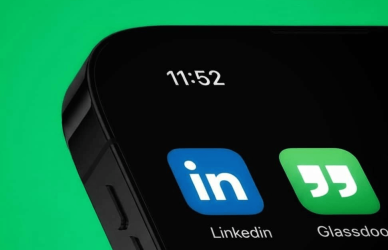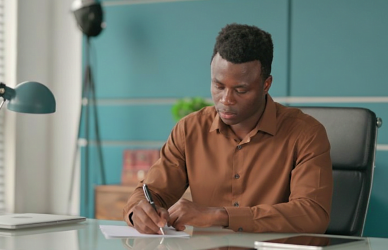Is it necessary to include a cover letter when applying for a job? Yes, it is. Now, you’ve finished writing your CV but before you hit ‘send’ to that job application, make sure to add a cover letter to it.
Job applications can be competitive, and sometimes your CV alone isn’t enough to show why you’re the best fit. That’s where a cover letter comes in. It gives you the chance to introduce yourself, share your story, and help the hiring manager see the person behind the resume.
In this article, you’ll learn what a cover letter is, why it’s important and how to write a perfect cover letter for any job.
What is a Cover Letter?
Think of a cover letter as an official note you send along with your CV to say, “This is why I’d be great for this job.” It’s your chance to speak directly to the person hiring and show a bit of your personality. While your CV lists your skills and experiences, your cover letter tells a story about you, why you chose your career path, what excites you about the role, and how you can add value to the team.
A good cover letter doesn’t have to sound too formal or complicated. A good cover letter should take a storytelling format. Telling why you’re applying, and what makes you a good fit for the job. Simple and honest works best.
Why is a Cover Letter Important?
You should never submit your CV without a cover letter for these reasons:
- It helps you stand out.
Many applicants send only their CVs. Adding a cover letter shows extra effort and helps you stand out from others who didn’t bother.
- It tells your story.
A cover letter connects your background, skills, and goals to the job you’re applying for. It helps the hiring manager understand you beyond your qualifications.
- It shows genuine interest.
When you write a thoughtful cover letter, you get to tell them about your interest in their company. It tells the employer that you actually care about the role and the company not that you’re just sending out random applications.
- It can get you an interview.
Sometimes, a strong cover letter makes all the difference. It can be the reason a hiring manager decides to shortlist you for an interview.
How To Write a Cover Letter For a CV
Now that we’ve established that your cover letter should always be submitted alongside your CV, let’s talk about how to write it.
A cover letter should follow a simple format, nothing complicated. It just needs to be neat, clear, and easy to read. Here’s a simple structure to follow with examples you can use as a guide using ChatGPT:
RELATED: ChatGPT Prompts to Write a CV That Lands Interviews
1) Header/Contact Details:
The first thing a cover letter should include is your contact information at the top. This section helps the hiring manager easily identify who the letter is from and how to reach you. Include your full name, email address, phone number, and location (city and country). You can also add the date just below your contact details. The goal is to make it look neat and professional.
Example:
Amanda Tony | amandatony@gmail.com | +234 801 234 5678 | Lagos, Nigeria | October 27, 2025.
2) Address:
A simple and polite greeting like “Dear Hiring Manager,” works well if you don’t know the person’s name. However, if the job listing includes a contact name, use that instead for example, “Dear Ms. Johnson.” Avoid overly casual greetings like “Hi” or “Hello there.”
3) Introduction
In that paragraph, mention the position you’re applying for and express enthusiasm for the opportunity, summarize your most relevant experience or skill that makes you a strong candidate. Your goal is to grab the hiring manager’s attention right away.
Example:
I’m writing to express my interest in the Content Writer position at Bright Media Agency. With experience in crafting engaging, SEO-optimized content and managing social media campaigns, I’m confident in my ability to help your team create meaningful digital impact.
4) Highlight Your Experience and Achievements
Write about your previous work experience, specific achievements, or key projects that align with the role. Focus on results, use numbers or outcomes when possible to show impact. This helps the recruiter see the value you bring.
Example:
In my previous role at XYZ Media, I developed and executed content strategies that increased audience engagement by 30%. I also worked closely with designers and editors to create campaigns that delivered measurable results and strengthened brand storytelling.
5) Show Why You’re a Good Fit and Why You Chose Them
Now, connect your skills and interests to the company you’re applying to. Mention what attracts you to the organization, maybe their values, creative approach, or projects you admire. Then, explain how your background aligns with what they need. This shows your genuine interest for the company rather than a generic application.
Example:
I admire Bright Media Agency’s reputation for innovative storytelling and its focus on helping brands connect meaningfully with their audiences. My ability to combine creativity with data-driven strategy makes me confident that I can contribute to your ongoing success.
6) Closing Paragraph and Call to Action
Wrap up your letter politely in the final paragraph. End with enthusiasm and invite the hiring manager to take the next step usually, an interview.
Example:
Thank you for considering my application. I would welcome the opportunity to discuss how my experience in content strategy and campaign management can support Bright Media Agency’s goals. I am available for an interview at your convenience and can be reached at +234 801 234 5678 or amandatony@gmail.com
Quick Tips to Remember
- Keep your cover letter short — one page is enough.
- Write in a natural tone, professional but not stiff.
- Always customize your cover letter to fit each job description. You can find cover letter templates which is also super easy to use.
- Proofread before sending. Check for spelling and grammar errors because these can ruin a good impression.





